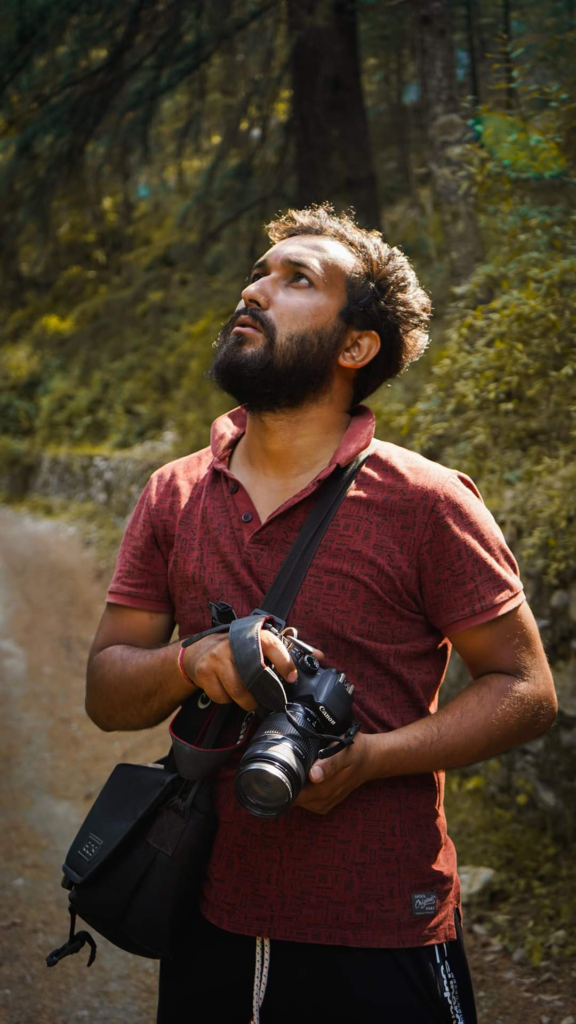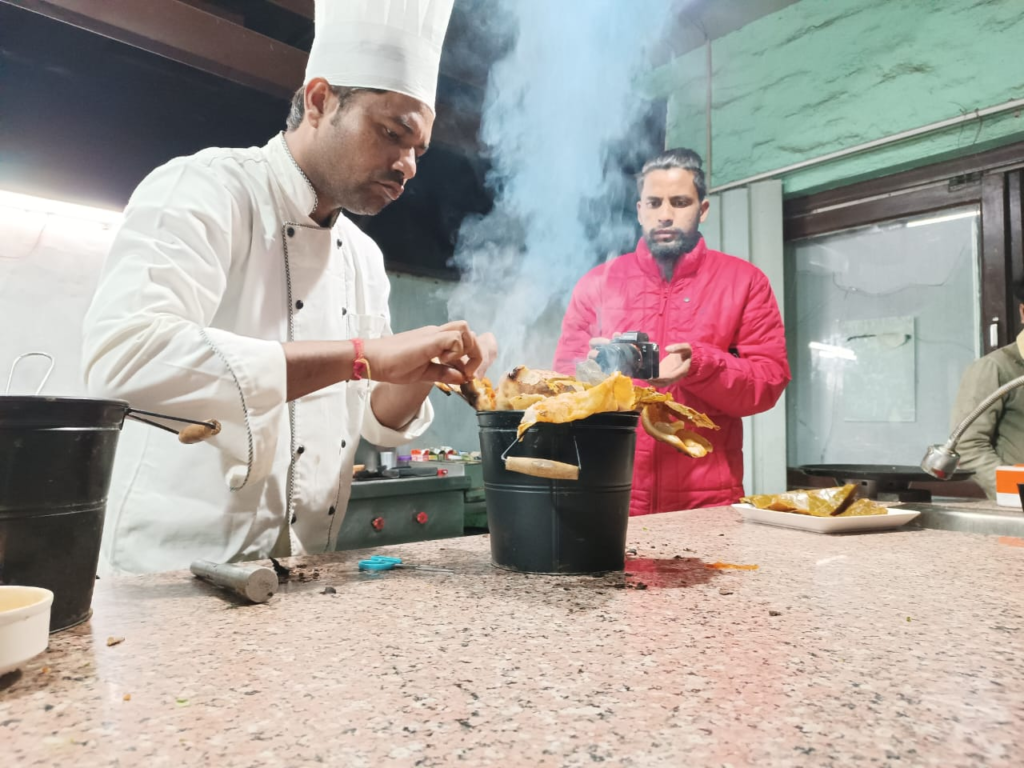
Imagine this scenario: You receive a last-minute call for a small video shoot and you have to reach the location as soon as possible. You take all the equipment that you could remember and leave. Now you are finally at the site, you open your bags but wait, what do you see? In your hurry, you forgot a necessary equipment, a simple stabilizer. Now, you are riddled with biggest question. How are you going to take steady shots?
This post is exactly for situations like these and then some more. We all know that as videographers we are required to adjust to every situation or circumstance that our projects and clients, throw at us. And, we have to stay ready for them all.
At Viral Bug Films, we have all grown and learnt with our fair share of experiences and that goes back to the days when the company did not have enough to own gimbals or sliders. Our director (in pic), for example is such an expert at handheld shoots that we often call him the human gimbal.
So, here are our (his) tips for shooting handheld videos which will help you capture impeccable footage that won’t leave your audience with a “turbulent” experience.
-
- SLOW MOTION
Slow motion can become your best friend when it comes to handheld recordings. You might want to know why? Try capturing a video in 30 fps or 60 fps with footage that doesn’t have a lot of movement on screen and then slow it down to 15fps and 30 fps. There are lesser jerks and motions and what you will get is a smooth footage.
Now we understand that you don’t want to shoot the entire video in slow motion but this is the perfect option to shoot montages that enhance a video but are not as relevant to the subject matter of the video. For example: If you are shooting a video where you also have to capture the beauty of a landscape, then you can definitely rely on slow motion.
-
- KEEP CAMERA SAFE FROM BODY MOTION
This is extremely crucial! Do whatever you can but keep the camera away from any kind of motion that could result in a jerk in the shot. You can walk, slide, dance for all we know but the hands need to stay locked in position at all times. Rain or Storm, nobody cares! What matters is the footage. Keep your knees bent so that your centre of gravity is closer to the ground, pull your arms in and lock your hands and wrists. At some angles this might make you feel ridiculous but as we stated before, it’s the end results that count. A few people laughing in the vicinity don’t matter till creativity is coming alive leaving the clients and you satisfied.
-
- WIDE ANGLE SHOTS

Once you zoom out and the shot becomes wider, there are more elements on screen and less attention needs to be paid to the smaller details. So, wider the angle is, the less noticeable the flaws of the video are. Zoom in upon anything that you want to shoot. What happens? Clarity! That’s what happens. Now try moving with the camera. What do you see with every step you take? The movement of the elements being shot on the camera is reflected back to you in the form of bouncy footage on the screen. This is exactly what we are looking to remove with a wide angle shot.
-
- THIRD POINT OF CONTACT
So, your hands are locked and your knees are bent but there’s still that annoying shake which can be due to a lot of factors. Maybe your hands are not stable enough, you could also be nervous, anything could be a possibility. What you need is a third point of contact that can serve as an extra support. You can use the strap of your camera, pull it around your neck and stretch your hands. This will create tension which in turn will stabilise your shot.
-
- GET CLOSER TO THE SHOT

Just in case you want a close up shot, then you are in luck. Get closer to the object, show a bit of foreground and you are sorted. Now, you would want to know why? The sole reason is the closer you are to an object the lesser movement is required to shoot it. You can move slowly and steadily around the object and you will get one of the smoothest footages possible.
Don’t believe us? You can try it for yourself. Or if you want, you may comment below and we will showcase a video for the same, replete with behind the scene footage and the after shot.
-
- SWAY AND SWING
Don’t simply walk when you want to capture an object from all sides. Use a swaying motion or one full swinging motion. Yes! Start gliding side to side or just bend your feet and go ahead and swing in one full motion. You might want to hit the gym or take dancing classes. Again, the idea of swaying and swinging like a dancer might sound ridiculous but when the footage comes out smooth, nothing else really matters.
-
- A HEAVIER CAMERA and A TOP HANDLE
Yes, you heard that right! A heavy camera helps to stabilise shots much better than lighter ones and if you can add a top handle it will end up so much better and smooth. You might want to know why? This is simply because it makes taking lower angle shots so much easier. Now we aren’t saying that you cannot manage without a top handle, what we want to say is that a top handle will result in lesser exercise of your legs. You can call adding one smart work.
We would suggest you to buy SmallRig handles as they are one of the best and cater to all the focal points. Visit SmallRig Handles page for more
These were the tips of our pros for hand held filming. Finally, a videographer needs to understand that hand held shoots come with their own set of limitations. Come what may, there will always be a shot that is not possible without a stabilizer. This is why they require a separate shot division and one has to learn how to work around the limitations so that they don’t prove to be a hindrance when it comes to editing the video.
As our human gimbal states, “The best handheld video are the ones which don’t give the impression that they were shot via hand.” And that is what our handheld shoots bring to the table.